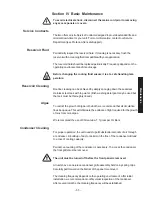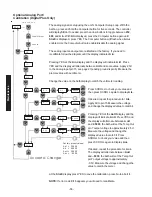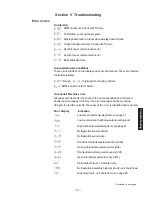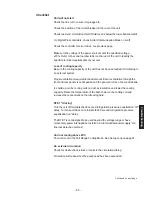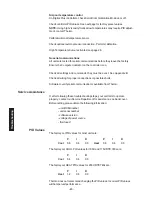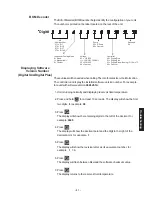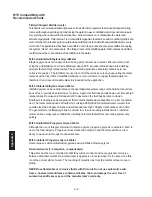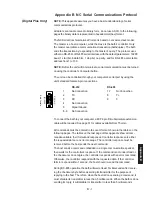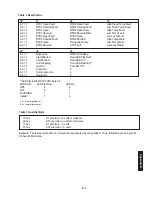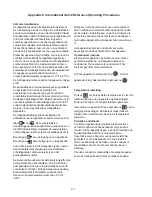
Appendix A
Unfavorably high total ionized solids (TIS) can accelerate the rate of galvanic
corrosion. These contaminants can function as electrolytes which increase the
potential for galvanic cell corrosion and lead to localized corrosion such as
pitting which can be observed at the studs and on the outside surface of
cooling coils. Eventually, the pitting will become so extensive that the coil will
leak refrigerant into the water reservoir.
For example, tap water in the U.S. averages 171 ppm (of NaCl). The recom-
mended level for use in a water system is between 0.5 to 5.0 ppm (of NaCl).
Recommendation: Initially fill the tank with distilled/deionized water. Do not use
untreated tap water as the total ionized solids level may be too high.
Maintain this water quality at a resistivity of between 1 to 10 megohm-cm
(compensated to 25°C) by using a purification system. Although the initial fill
may be as high as 18 megohm-cm (compensated to 25°C), the desired level
for long time usage is 1 to 3 megohm-cm (compensated to 25°C).
The above two recommendations will reduce the electrolytic potential of the
water and prevent or reduce the galvanic corrosion observed.
Appendix A Fluids
Water Quality Standard and Recommendations
Permissible (PPM)
Desirable (PPM)
Microbiologicals
(algae, bacteria, fungi)
0
0
Inorganic Chemicals
Calcium
<50
<0.6
Chloride
<25
<25
Magnesium
<50
<0.1
Sulfate
<25
<50
Total Hardness
<100 (5 grains)
<0.05
A -1





